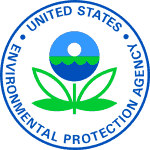 The Environmental Protection Agency website vastly contains layers of information that seemingly go on forever with each click of the mouse–– a visit that proves overwhelming for the unfamiliar. That said it can be very difficult to understand the criminal provisions.
The Environmental Protection Agency website vastly contains layers of information that seemingly go on forever with each click of the mouse–– a visit that proves overwhelming for the unfamiliar. That said it can be very difficult to understand the criminal provisions.
Among those layers are environmental regulations and the EPA’s enforcement goals. Many of which fall under the Resource Conservation and Recovery Act, the federal laws that govern the disposal of pollutants and hazardous waste. The RCRA also provides general outlines and penalties for violations of criminal provisions.
The EPA’s statute examines both civil and criminal infractions resulting in varying types of enforcement actions. According to the EPA, differences between criminal and civil violations fall within:
- Legal Standards, taking into account whether the crime was a “known violation,” the intentional decision to break the law. Whereas civil infractions are likely the result of an accident or error.
- Burden of Proof is based upon “the preponderance of the evidence,” meaning the accused only has to tip the scale of justice ever so slightly, showing that he or she was more right than wrong. In contrast, criminal guilt must be established “beyond a reasonable doubt.”
- Results, refer to corrective action and cleanup enforcement.

For more information about solvent specific guidelines, check out the EPA’s Solvents in the Workplace.

Connect with BECCA Inc. on Facebook, Twitter and LinkedIn. Visit our YouTube channel on “Innovation for Waste Minimization.”
Are You Properly Disposing Your Paint Waste?
Most Costly Body Shop Violations

